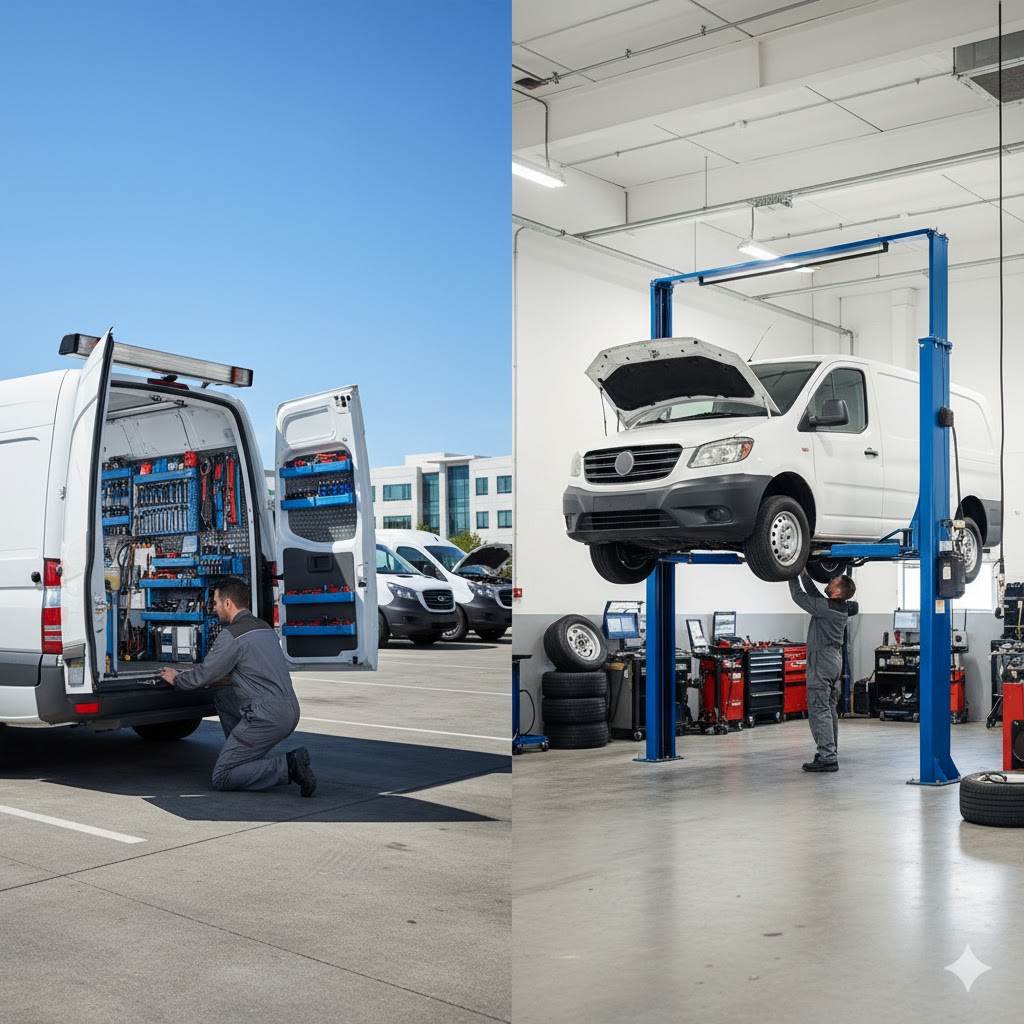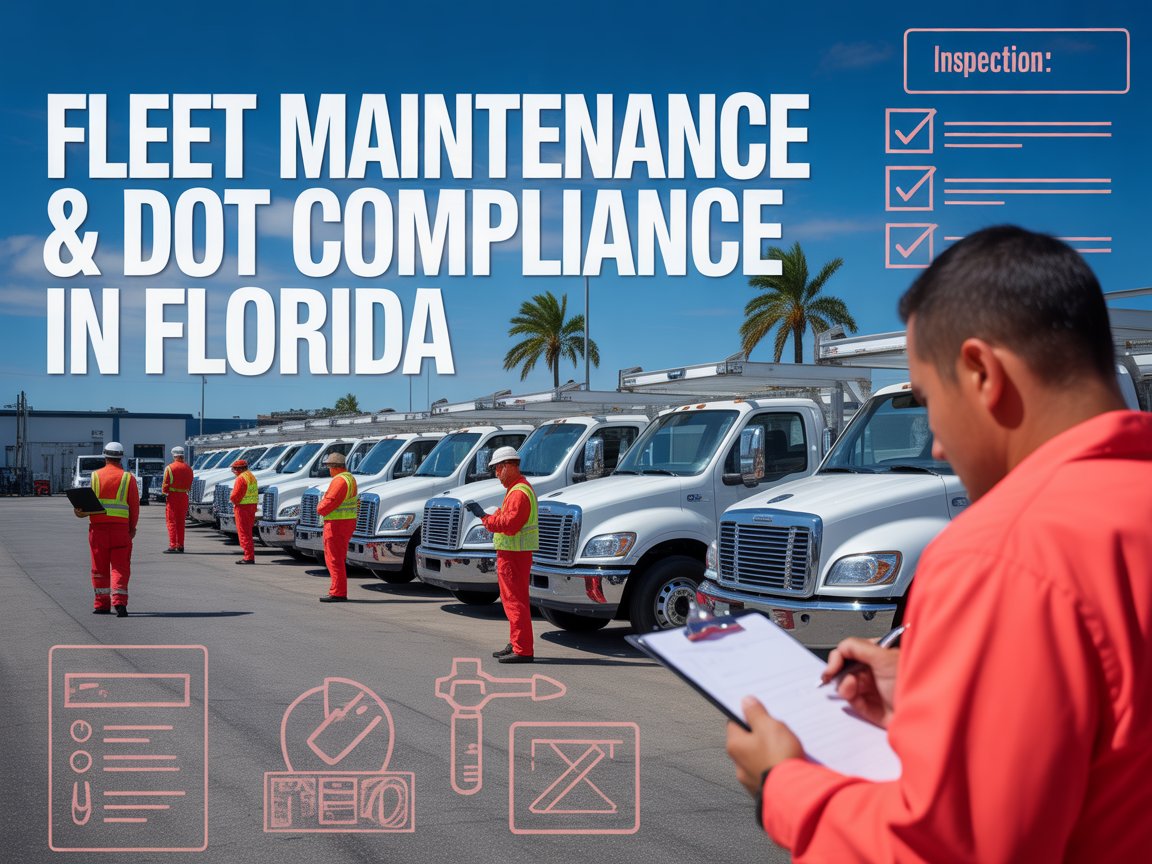When businesses think about fleet management maintenance or investing in a reliable company car maintenance service, it’s common to confuse two important terms: fleet management and fleet maintenance. While they sound similar, they serve very different roles in keeping your vehicles safe, efficient, and cost-effective. Understanding these differences is critical for any organization that depends on vehicles whether you run a delivery service, a construction company, or a corporate sales fleet.
In this article, we’ll break down the differences between fleet management and fleet maintenance, explain why both matter, and show how the right partner can help you save money and improve performance. If you’d like a detailed look at how maintenance works in practice, check out our guide on fleet management maintenance.
What Is Fleet Management?
Fleet management is the strategic oversight of all aspects of a company’s vehicle operations. It goes beyond just repairing cars—it’s about optimizing the entire fleet to make sure every vehicle is used efficiently, complies with regulations, and supports business goals.
Key responsibilities of fleet management include:
-
Vehicle acquisition – Choosing the right cars, trucks, or vans for your company’s needs.
-
Fuel management – Monitoring usage, reducing waste, and improving fuel efficiency.
-
Driver management – Tracking performance, ensuring safety training, and reducing risks.
-
Compliance and safety – Keeping vehicles aligned with state and federal regulations.
-
Technology use – Leveraging GPS tracking, telematics, and software for smarter operations.
In short, fleet management is the “big picture” process that makes sure vehicles contribute to your business success instead of becoming a liability.
What Is Fleet Maintenance?
While fleet management looks at strategy, fleet maintenance focuses on the hands-on care and servicing of company vehicles. It ensures every car, truck, or van is safe to drive, reliable on the road, and less likely to break down unexpectedly.
Fleet maintenance responsibilities include:
-
Routine servicing – Oil changes, filter replacements, tire rotations, and brake checks.
-
Repairs – Fixing mechanical, electrical, or cosmetic issues quickly.
-
Preventive maintenance – Identifying problems before they lead to costly breakdowns.
-
Record keeping – Tracking service history to maintain warranties and resale value.
Without consistent maintenance, even the best-managed fleet will face unnecessary downtime and rising costs. That’s why most businesses choose a dedicated company car maintenance service to ensure every vehicle gets professional attention.
Fleet Management vs. Fleet Maintenance: The Key Differences
While the two are connected, here are the major differences:
| Aspect | Fleet Management | Fleet Maintenance |
|---|---|---|
| Scope | Strategic, big-picture operations | Tactical, vehicle-specific care |
| Goal | Optimize fleet efficiency & cost savings | Keep vehicles safe, reliable, and road-ready |
| Focus | Acquisition, usage, compliance, tracking | Repairs, servicing, preventive checks |
| Responsibility | Fleet managers, company leadership | Mechanics, service teams, technicians |
Think of it this way: fleet management is about decisions, while fleet maintenance is about action. Both are essential, and when combined, they reduce costs, improve safety, and extend vehicle lifespans.
Why the Difference Matters for Your Business
Understanding the difference isn’t just about terminology—it directly impacts your bottom line.
-
Cost savings: Without proper management, vehicles may be overused, underutilized, or poorly allocated. Without maintenance, repairs pile up, leading to expensive replacements.
-
Safety: Fleet maintenance ensures vehicles are road-ready, while fleet management ensures drivers operate them safely and responsibly.
-
Compliance: U.S. businesses must follow Department of Transportation (DOT) and state-level regulations. Fleet management handles documentation and compliance, while maintenance ensures vehicles meet inspection standards.
-
Productivity: Downtime costs money. Strategic management reduces scheduling issues, and maintenance prevents unplanned breakdowns.
When both systems are working together, your business avoids costly mistakes and maximizes vehicle value.
Choosing the Right Company Car Maintenance Service
For U.S. businesses, having a trusted partner for both fleet management and maintenance is key. A professional provider not only handles routine oil changes and brake checks but also helps with long-term planning, budgeting, and compliance.
Look for a company car maintenance service that offers:
-
Mobile service options for convenience.
-
Transparent pricing and detailed service reports.
-
Preventive maintenance scheduling.
-
Strong customer support and flexible service plans.
This partnership ensures you’re not just reacting to breakdowns—you’re proactively protecting your investment.
Final Thoughts
Fleet management and fleet maintenance are two sides of the same coin. Management ensures you’re making smart business decisions about your vehicles, while maintenance ensures those vehicles stay safe and reliable on the road. Together, they form the backbone of efficient, cost-effective vehicle operations for any company.
Ready to Optimize Your Fleet?
If your business relies on company vehicles, you can’t afford to overlook either fleet management or fleet maintenance. Oilcanman offers trusted, professional service designed to keep your fleet running smoothly. Don’t wait until a breakdown costs you time and money book your appointment today and let our experts handle your fleet needs.



